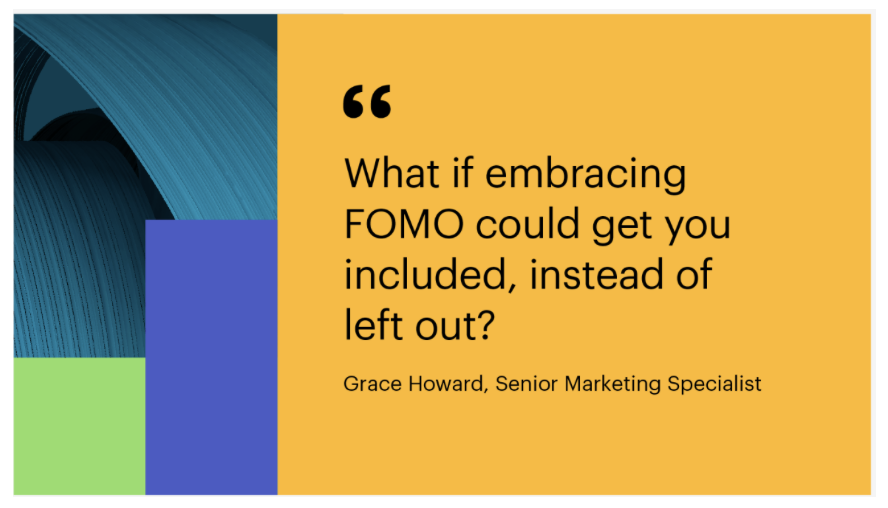The framework of any ABM program starts with developing and defining your ideal customer profile (ICP). A well defined ICP is a strong foundation for any successful ABM program. While almost every person in B2B SaaS knows that ICP is important, most companies don’t really have a strong ICP. And in reality, having an ICP doesn’t really matter unless it’s the ‘right’ ICP. Organizations with a strong ICP definition, can achieve up to 68% higher win rates, as well as shorter sales cycles, and greater ACV(average contract value) and LTV(lifetime value).
So, back to the basics we go. What exactly is an ICP? Why is an ICP important for ABM? And how do you build an ICP that will set you up for success? By the end of this blog, you’ll be able to answer these three questions, plus learn a few pro tips along the way.
What is an ICP (ideal customer profile)?
An ideal customer profile (ICP) is a hypothetical description of the type of buyers in your market that would benefit most from your product or service.
For example, if you are selling SaaS, your ideal customer might be accounts in the B2B tech industry. From there you can further layer criteria to create a super defined ICP. “Midsize, B2B tech company, with 50-100 employees, in the United States”, (you can get even more specific than this).
Why do you need an ICP for ABM?
If you’ve ever thought… “well I don’t want to limit us to just these accounts” you aren’t alone. However, let’s change that mindset when thinking about your ICP for ABM.
ICP is a critical part of any marketing strategy – but especially for ABM. Really, the whole point of account-based marketing is to target your marketing efforts toward very specific accounts. This means you need to have a really good idea of who your ideal accounts are and have a set of criteria to identify them so you can start building your target account list. Your ICP is going to be the criteria for all businesses in your target account list, and should be the first piece you work on together as a team (sales & marketing).
ABM is designed to market to your best-fit customers and defining that with your ICP is how you get started. Your ICP doesn’t necessarily mean you ONLY have to work with those customers, it just helps guide your ABM strategy by starting with your target account list. Hopefully, we’ve made a strong case for the usefulness of ICPs in ABM strategies. With this in mind, let’s dive into how to build your ICP.
Start with what you’ve got
Chances are you already have customers that are “best-fit”. Drill down into what makes up your best customers from the data you already have. Think of who your most valuable clients are – most likely, they are customers you enjoy working with, who get value from your services, and that you get a lot of value from as well. Start looking there.
Leverage your current position by digging into questions like:
- What is working for our company right now?
- Which accounts are we able to upsell into?
- Are there similarities between our top customers such as size, industry, location, etc?
- Which accounts have the largest LTV (lifetime value)?
Answering these questions will shed light on your “best-fit” customers and allow you to workshop an ICP off of them. Look for similarities between customers that are doing well.
Describe your ideal account
You would never date someone who does not check off important boxes, would you? Same goes for your ICP. ICP is your ‘dating’ checklist for accounts. You would never target an account that doesn’t check off your most important criteria. When you are dating, there are always certain criteria you are looking for. I like to think about ideal customer profiles the same way.
Baseline firmographic criteria for your ICP can include the following and more.
Elements of an ideal customer profile
- Industry – What products and services do the account sell?
Companies that are in healthcare will have different needs and behave differently than companies in manufacturing.
- Location – Where is the account located?
Accounts based in the United States will behave differently than ones in EMEA or APAC.
- Size – How large is the account?
Small, mid-size, and enterprise accounts will all be very different from each other and be in different maturity stages and markets.
- Budget – What is your ideal customer’s typical contract value?
Based on your own pricing – some accounts may have more budget allocated towards spending money on whatever product or service you are offering.
- Current tech stack – What tools are in the account’s tech stack?
Take a walk in their shoes
One of the best exercises a marketer can do is to put themselves in the shoes of their customers and prospects. Empathy and compassion are two of the most important things when it comes to marketing a product and one of my favorite quotes is from Triblio Founder, Andre Yee.
“Being a human first and a marketer second might just help you be a better marketer.“
Andre Yee, Triblio Founder
You should see your target accounts not just as a number or a name, but remember the humans behind them, and aim to provide value to your ideal customers.
What are their key drivers?
Pain Points – What issues are they facing? How could your product or service help solve them? A more psychographic aspect of your ideal customer profile, knowing your ideal customer’s pain points and motivations is key. If you know your ICP’s pain points, it can help ensure you reach them with your marketing messaging by cutting through the noise with an empathetic message they relate to. To get to know your ideal customer’s pain points, you can listen to prospect or customer calls, get involved in customer communities (Slack communities, LinkedIn, etc.), or conduct more formal research. These insights should help you decide how to speak to your ideal customers, who you’ve identified with your ideal customer profile firmographic data points.
DO NOT – set it and forget it
ICPs are not a one-and-done deal. Setting and forgetting is one of the biggest mistakes we see companies make when creating an ICP. The market is always evolving, which means your ICP will periodically need updating. A good way to understand the health of your current ICP is by communicating with your customer success team. Set up quarterly calls to check in on customer satisfaction. Ask your CS team “who do you think is a good customer and why?”, and work from there with both sales and marketing to revisit your ICP, does it still hold true? Involving marketing, sales, and CS gives you valuable information from different vantage points to decide if your ICP needs updating and how to define it.
?Pro tip: Try adding your ICP to your brand guidelines. Document your ICP in a place where everyone across different teams can find it easily. Everyone in your organization should be aware of your ICP and what firmographics make an account a good fit.
Conclusion: next step – buyer personas
Once you’ve defined your ideal customer profile, the work doesn’t stop there…
Each ideal customer is an account, and each account is made of many stakeholders that have a say in whether they end up doing business with you. So, now what? Now you can take your defined ideal customer profile, and dig into the buyer personas that play into each ideal customer. For each contract you close, you probably had at least one stakeholder who served as a buyer champion. To effectively market to not just whole accounts, but individual prospects, you should define a few buyer personas. Buyer personas are essentially the same sort of exercise as defining ideal customer profiles, but on a personal level. Much like ideal customer profiles, personas should define a hypothetical prospects’ title, experience, motivations, and pain points.
Once you’ve done the hard work of defining your ideal accounts and buyers within those accounts, you can focus on getting your marketing messaging in front of them. By identifying ideal customer profile and your buyer personas, you can be more confident that your messaging will resonate based on their high level of fit with your product.







